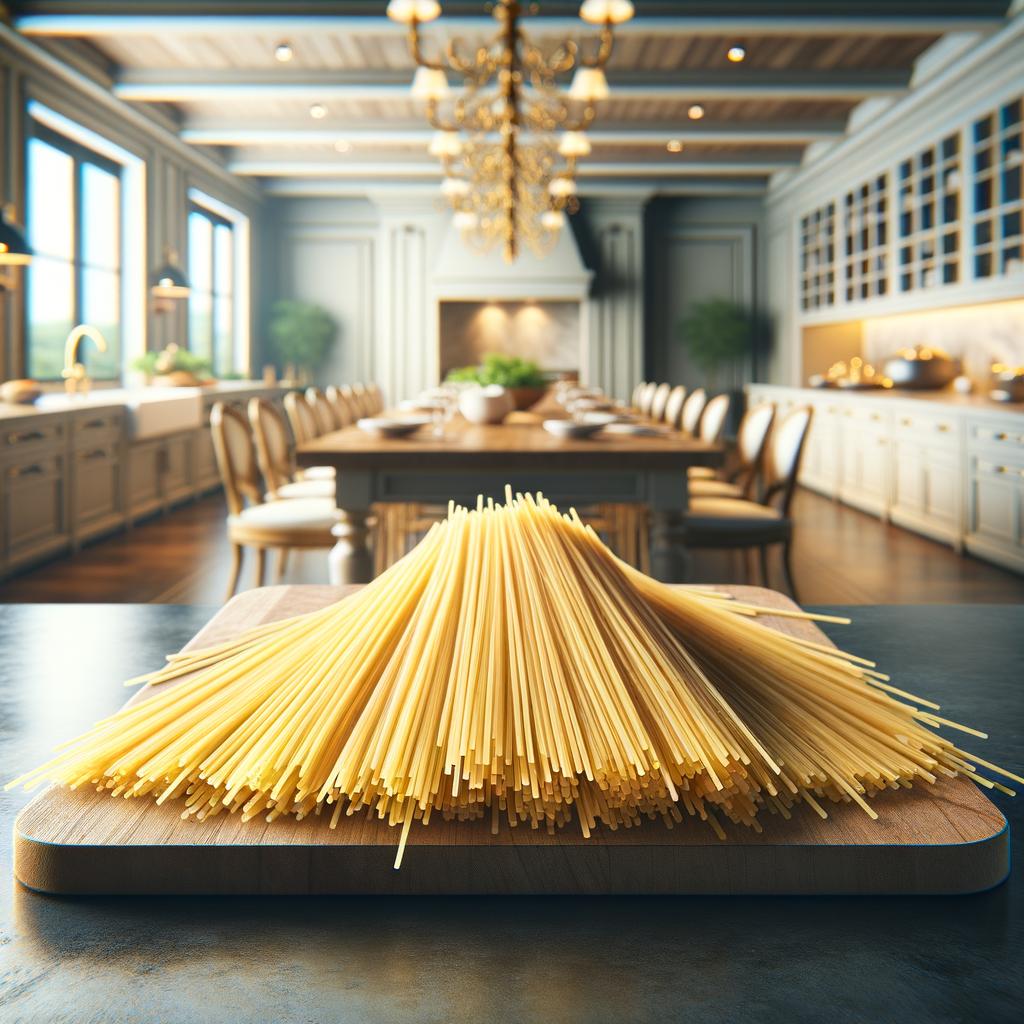Spaghetti Noodles

Spaghetti Noodles
Description
Spaghetti noodles, the quintessential symbol of Italian cuisine, are long, thin, cylindrical strands of pasta. They are typically made from durum wheat semolina, giving them a firm, slightly chewy texture when cooked al dente. The color of uncooked spaghetti noodles is a light, golden hue, which darkens slightly when cooked. The flavor profile of spaghetti noodles is mild and slightly nutty, making them a perfect canvas for a wide array of sauces and toppings. What sets spaghetti apart from other types of pasta is its versatility and its ability to hold onto sauces, thanks to its slender yet sturdy shape.
Primary Uses
Spaghetti noodles are a staple in many dishes across various cuisines, but most notably in Italian cooking. They are commonly served with a variety of sauces, including the classic tomato marinara, rich and creamy alfredo, or simply tossed in garlic and olive oil. Spaghetti is also the star ingredient in dishes like spaghetti carbonara, spaghetti bolognese, and spaghetti aglio e olio. Beyond the culinary world, spaghetti noodles have found their place in the world of art and design, often used in crafts and even architectural models due to their sturdy and linear form.
History
The history of spaghetti noodles is steeped in intrigue and romance. While Italy is often credited with the invention of spaghetti, historical records suggest that pasta similar to spaghetti was consumed in ancient China as far back as 5,000 BC. The popularization of spaghetti in the West, however, can be traced back to the 12th century Sicily. Over time, spaghetti has become a symbol of Italian culture and cuisine, with countless regional variations and recipes developed over centuries. An interesting folklore is that of the Flying Spaghetti Monster, a deity of the parody religion Pastafarianism, which uses spaghetti and meatballs as a metaphor for creation.
Nutritional Information
Spaghetti noodles are a good source of carbohydrates, providing energy for the body. They also contain a decent amount of dietary fiber, particularly if made from whole wheat. Spaghetti noodles also contain some protein, and small amounts of various vitamins and minerals, including B-vitamins and iron. When compared to other types of pasta, spaghetti's nutritional profile is quite similar. However, it's the choice of sauce and toppings that can significantly impact the overall nutritional value of a spaghetti dish. As with any food, moderation is key to enjoying spaghetti noodles as part of a balanced diet.

